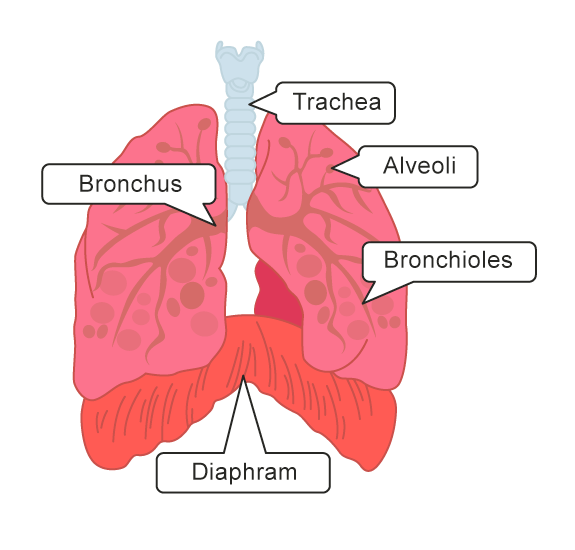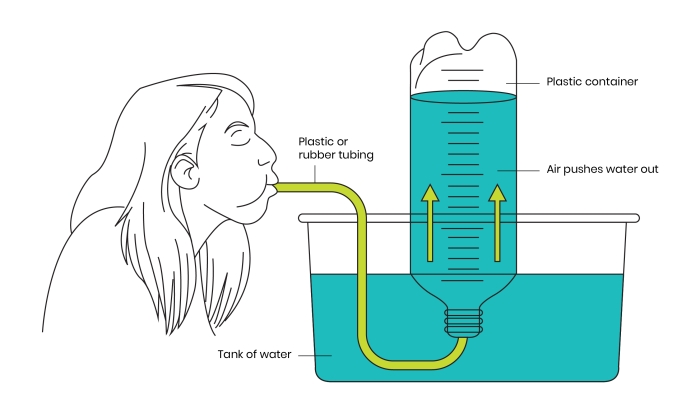Did you know that on average our lungs can hold around six litres of air?
That's about 25 cups of air!

The maximum amount of air we breathe in and out is called our total lung capacity. Our lung capacity can be affected by many factors like age, fitness and health.
A larger total lung capacity means more oxygen is taken into the body with every breath. Through exercise, athletes can increase their total lung capacity. This allows athletes to perform better! Measuring our lung capacity can also help identify any potential problems with our lungs.

So how do we measure lung capacity?
Lung capacity can be measured fairly easily - here's what's needed and what you have to do:
Equipment:
- plastic or rubber tubing/straw
- large plastic bottle/container
- tank or bucket of water
- measuring cylinder
- permanent marker pen
Method:

1. Fill the tank/bucket with water
2. Measure 100 ml of water using the measuring cylinder
3. Pour the water from the measuring cylinder into the plastic container/bottle
4. Mark where the water comes up to on the plastic bottle with a permanent pen
5. Continue to fill up the plastic container/bottle with water 100 ml at a time until you get to the very top
6. Put the rubber tubing into the bottle
7. Turn the plastic container/bottle upside down in the tank keeping the bottle neck submerged in the water
8. Take a deep breath and breathe out into the rubber tubing in one breath
9. Count the lines above the water line and multiply by 100 - this is your lung capacity
10. Record your lung capacity and repeat two more times and calculate an average
When we breathe out fully, the air in our lungs will replace the water in the bottle, giving us our total lung capacity.
In this activity, we're going to explain how to calculate our total lung capacity.








